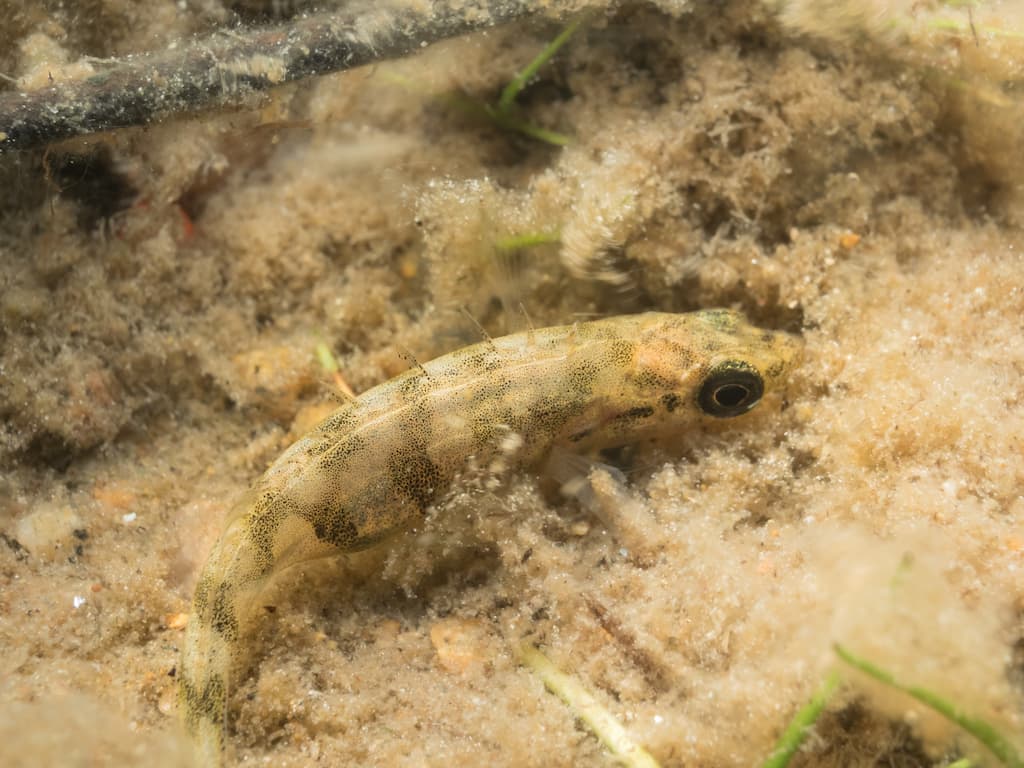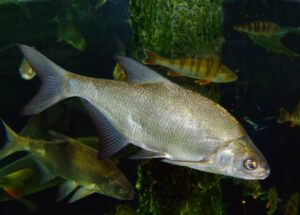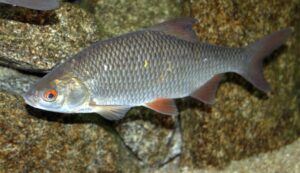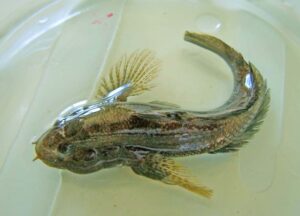Coarse Fish: Nine-spined Stickleback (Pungitius pungitius)

The Nine-spined Stickleback or Ninespine Stickleback, scientifically known as Pungitius pungitius, is a small freshwater fish that presents an exciting challenge for anglers.
Despite its modest size, the Nine-spined Stickleback is a remarkably combative and cunning fish, requiring a certain level of expertise to catch. In this article, we will explore everything there is to know about the Nine-spined Stickleback, from its natural habitat to the most effective fishing techniques.

What is a Nine-spined Stickleback (Pungitius pungitius)?
The Nine-spined Stickleback (Pungitius pungitius) is a small freshwater fish, measuring between 5 and 10 centimeters in length. It is recognizable by its slender shape and dark colors. It is equipped with 9 to 12 dorsal spines and is primarily a carnivorous species.
Fish Description: Nine-spined Stickleback (Pungitius pungitius)
Identification
The Nine-spined Stickleback, or Pungitius pungitius, is a small freshwater fish measuring between 5 and 10 centimeters in length. It has a small and slender head with round eyes and robust jaws equipped with sharp teeth.
Well-developed gill covers are located on its sides. It possesses 9 to 12 spines on its back and lacks scales.
The fins of the Nine-spined Stickleback are of moderate size, with a coloration ranging from gray to dark brown. Its body is elongated and slim, with a dark back, lighter sides, and a silver-white belly.
| Class |
| Actinopterygii |
| Order |
| Gasterosteiformes |
| Family |
| Gasterosteidae |
| Genus |
| Pungitius |
| Species |
| P. pungitius |
| Binomial Name |
| Pungitius pungitius (Linnaeus, 1758) |
Size and Weight
The Nine-spined Stickleback is a small fish, with an average size ranging between 5 and 10 centimeters and weighing only a few grams. However, some specimens can reach larger sizes, up to 15 centimeters in length and weighing around 30 grams.
Longevity
The Nine-spined Stickleback has an average lifespan of 2 to 3 years in its natural habitat. However, under favorable captive conditions, some individuals can live up to 5 years. The growth rate of the Nine-spined Stickleback is relatively rapid, with an average weight gain of 0.5 grams per month in summer and 0.1 grams per month in winter.
Habitat and Behavior
Habitat
The Nine-spined Stickleback is a widely distributed freshwater fish found in rivers, lakes, and ponds across Europe and Asia. It can be found in clear and cool waters of mountain streams, as well as in wetland areas of the plains. Nine-spined Sticklebacks prefer well-oxygenated waters rich in vegetation, where they can hide and stealthily hunt their prey.
Diet
The Nine-spined Stickleback is a carnivorous fish, primarily feeding on insects, crustaceans, and fry. It often hunts at dawn and dusk, taking advantage of low light conditions to stalk its prey. The Nine-spined Stickleback is also fond of larvae and nymphs of aquatic insects, as well as small crustaceans like gammarus.
Reproduction
The breeding season of the Nine-spined Stickleback occurs in spring when the water temperature begins to rise. During this time, males develop nuptial tubercles on their pectoral fins, which enable them to compete for females.
Spawning takes place on rocky substrates, where females can lay up to 500 eggs. The fry hatch after one to two weeks and primarily feed on plankton and insect larvae. The Nine-spined Stickleback reaches sexual maturity at one year of age and has an average lifespan of 2 to 3 years in its natural habitat.
Importance of the Nine-spined Stickleback
The Nine-spined Stickleback holds significant interest for anglers due to its combativeness and agility. Despite its small size, it puts up a strong fight, making it a preferred adversary for sport fishing enthusiasts.
However, it is essential to note that the Nine-spined Stickleback is a protected species in some countries, and it is crucial to respect fishing regulations to preserve this natural resource. Ecologically, the Nine-spined Stickleback plays an important role in balancing aquatic ecosystems, both as a predator and prey for other species.
Fishing Techniques for the Nine-spined Stickleback (Pungitius pungitius)
The Nine-spined Stickleback is primarily targeted using fly fishing techniques due to its small size and wariness toward artificial baits. It is advisable to use small-sized hooks, preferably barbless, to facilitate catch-and-release practices.
The best fishing periods for the Nine-spined Stickleback are spring and summer when the water is warmer and insects are more active. Preferred locations for targeting the Nine-spined Stickleback include areas with currents and the edges of aquatic vegetation, where it seeks refuge and hunts its prey.
The most effective fishing technique for the Nine-spined Stickleback is nymph fishing, using imitations of aquatic insects. It is also possible to catch the Nine-spined Stickleback using spinners or soft lures, although this technique is less common.
Common name for the Nine-spined Stickleback
Nine-spined Stickleback is also known as Ninespine Stickleback in all english speaking countries as well then Barnystickle in Canada.
Most popular common names for the Nine-spined Stickleback are Epinochette (french), Epinoche à neuf épines (canadian french), Zwergstichling (german), Tiendoornige stekelbaars (dutch) and Cierniczek (polish).
Conservation Status of the Nine-spined Stickleback (Pungitius pungitius)
The Nine-spined Stickleback is classified as LC (Least Concern) in the IUCN Red List. The “Least Concern” category signifies a widely distributed and abundant species.






